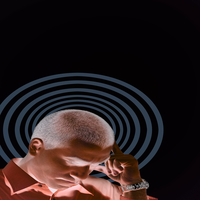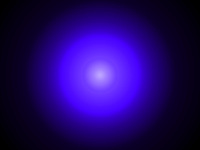Blood Pressure and the Seasons

High blood pressure may be more difficult to control in winter, according to research reported to the American Heart Association, at its meeting in Orlando last week.
A five-year study by a team from the United States found Department of Veterans Affairs analyzed data on 443,632 veterans treated for hypertension at 15 VA hospitals in cities throughout the US found that blood pressures during the summer were on average 7.76% lower than during the winter. The researchers found the same pattern emerged from each hospital they studied, regardless of whether it was based in a warm or cold climate, in locations that ranged from Anchorage, Alaska to San Juan, Puerto Rico.
This is an intriguing finding, and there are a load of potential explanations for it:
A more active summer lifestyle may be the key
It is also possible that people might eat more salty foods in winter, and salt is strongly linked to raised blood pressure
There may also be a link with sunlight. Which can trigger a number of metabolic changes
But I also need to sound a note of caution: blood pressure changes all the time throughout the day. Although the study was all done correctly, it is important to realize that many subtle variations in blood pressure could be lurking within the data.
Nonetheless, people should be aware of the possibility that their blood pressure may be harder to control in the winter, and to be more vigilant at this time.
“For everything there is a season, And a time for every matter under heaven: A time to be born, and a time to die; A time to plant, and a time to pluck up what is planted; A time to kill, and a time to heal; A time to break down, and a time to build up; A time to weep, and a time to laugh; A time to mourn, and a time to dance; A time to throw away stones, and a time to gather stones together; A time to embrace, And a time to refrain from embracing; A time to seek, and a time to lose; A time to keep, and a time to throw away; A time to tear, and a time to sew; A time to keep silence, and a time to speak; A time to love, and a time to hate, A time for war, and a time for peace.”
–The Bible, Ecclesiastes, 3:1-8
“Each new season grows from the leftovers from the past. That is the essence of change, and change is the basic law.”
–Hal Borland (American Writer, 1900-1978)
“Live in each season as it passes; breathe the air, drink the drink, taste the fruit, and resign yourself to the influences of each. Let them be your only diet drink and botanical medicines.”
–Henry David Thoreau (American Essayist and Philosopher, 1817-1862)
Low Testosterone May Shrink Your… Brain

It is almost forty years since Fernando Nottebohm first began to describe some of the dynamic changes that occur in the brains of songbirds as the seasons change. Every year some regions of the brain grow in response to changes in ambient light levels and others regress. There are marked seasonal changes in the brains of fish, reptiles, amphibians, birds and even some mammals such as gerbils, mice and perhaps even in humans. But the magnitude of the changes in birds far outweighs any other species. It is hoped that that understanding the mechanism controlling that change may help us to develop treatments for age-related degenerative diseases of the brain such as Parkinson’s and dementia.
Researchers from the University of Washington and the University of California, Berkeley, have published some interesting new data in the Proceedings of the National Academy of Sciences. They report a striking shrinkage in the size of the brain regions that control singing behavior of Gambel’s white-crowned sparrows. This transformation is triggered by the withdrawal of testosterone and can be seen within 12 hours. The study is the first to report such rapid regression of brain nuclei caused by the withdrawal of a hormone and a change in daylight conditions in adult animals.
The research protocol was designed to mimic the natural seasonal changes that occur in the brains of the sparrows. Their song-control regions expand in the spring and summer leading up to the breeding season, as they use songs to establish territories and attract mates in Alaska. Later in the summer, as the birds get ready to migrate back to California, the same brain regions shrink.
To better understand what happens in the sparrows’ brain, the researchers received federal and state permits to capture 25 of the migrating male birds in Eastern Washington. They then housed the birds for 12 weeks before exposing them to 20 days of long-day conditions comparable to the natural lighting the sparrows would experience in Alaska during the breeding season. The birds were also implanted with testosterone.
At the end of 20 days, six of the birds were euthanized and the remaining 19 were castrated and testosterone implants were removed so there would not be any circulating testosterone in their systems. After 12 hours five more birds were euthanized and the remainder were euthanized at 2, 4, 7 and 20 days.
The researchers found that the size of the high vocal center (HVC) region decreased 22 percent within 12 hours after the withdrawal of testosterone and that the number of neurons in this song-control region fell by 26 percent after four days. In addition, the size of two other song-control regions called Area X and the RA significantly regressed after 7 and 20 days.
Much as I dislike animal experiments of any kind, it is invaluable to have an animal model system in which we can observe predictable neurodegeneration. As men age, circulating levels of testosterone decrease, and other research has shown that this decline may contribute to cognitive impairment.
This is an important new approach to understanding the interplay between nerve cell degeneration and hormones.
Rhythms in the Brain

It is often a bit frustrating to read articles about the brain in which the writer says things like: “research has shown that the insula does this…” or “the amygdala does that…”
This idea that it is possible to reduce brain functions to regions of the brain is not correct. Some years ago I used the term “Neo-phrenology,” to describe this fallacy, though I am sure that I was not the first. (Phrenology was the old and discredited theory that you tell things about people by examining the bumps on their heads.)
So why is it a fallacy? The idea that certain functions can be “localized” to a bit of the brain is called “naïve localizationism.” The vast majority of the psychological functions of the brain are performed by distributed networks, not a single lump of tissue. One of the remarkable things about the human brain is that it can recruit new circuits as they are need. If we do not have enough brainpower to solve a problem, other systems are taken off line so that they do not distract and may be able to help. You have probably had the experience of working on something so intensely that you lose track of time, and fail to hear things going on around you.
Yes, there are regions that have jobs to do. For instance the auditory cortex is responsible for processing sound. But after that initial processing the rest of the brain becomes involved in deciding what to do with the information. The key to understanding the brain is how different regions of the brain communicate. As I recently mentioned in a different context, there are good reasons for believing that a number of problems, from the schizophrenias to the attention deficit disorders, may all be a result of poor communication between different regions of the brain.
Part of the problem is working out how regions communicate has been technical: we have not had the computers or hardware to do the measurements. But that is beginning to change.
Earl Miller, a professor of neuroscience at Massachusetts Institute of Technology’s Picower Institute for Learning and Memory, recently said that today’s faster computers and more advanced electronics might provide scientists with the tools they need to unlock the brain’s mysteries.
“Multiple electrode recording techniques, offer a whole new level of brain interactions that can’t be seen using the [current] piecemeal approach.”
Two studies published recently in th journal Science support this idea.
In the first Thilo Womelsdorf and a group of neuroscientists at the F. C. Donders Center for Cognitive Neuroimaging at Radboud University Nijmegen in the Netherlands, looked at the electrical activities of groups of neurons in the brains of cats and monkeys wile they were engaged in an array of different tasks. They found that two groups of neurons could only communicate efficiently with each other when their rhythms are coordinated, or synchronized. If the rhythms are not coordinated, then one group sends information while the other is not ready to take it on and vice versa.
The researchers found that when the rhythms of electrical activity are synchronized between neurons in distinct brain areas, memories are made and tasks are completed more efficiently.
The other study, by scientists at the University of Melbourne in Australia, also revealed communication between the cerebral cortex and the deep medial temporal region.
They flashed two images at a group of macaque monkeys for less than a second. The monkeys had to decide whether the spatial orientation of a stack of bars in two images were the same or different. While the animals worked, researchers monitored the electrical fields in the posterior parietal cortex, which is one part of the system involved in directing spatial attention. At the same time they looked at the medial temporal area, a region deep in the midbrain that handles movement perception. The researchers had hypothesized that these two areas need to communicate with one another to enable reasoning.
The researchers observed activity first in the parietal cortex, followed by synchronous action there and in the medial temporal area. The delay illustrates “a top-down” feedback from the cortex, which then signals the lower area.
One of the authors, Trichur Vidyasagar, said,
“The parietal neurons seem to code for what is salient or relevant in the world and allocate attentional resources accordingly. The medial temporal neurons are sensory ones that process the visual signals, but due to the influence of the parietal cortex the activity across the medial temporal area is varied.”
The studies were accompanied by an editorial in which Robert Knight, a cognitive neuroscientist at the University of California, Berkeley, praised the findings – and their potential significance.
This research is important for two reasons:
First it confirms that the key to understanding the brain is the interaction of networks.
Second, there are a number of periodic disorders, such as depression, seasonal affective disorder, mania and even some rare types of episodic psychosis that are episodic and are not associated with any clearly defined neuroanatomical disruption. It may well be that some of the periodic symptoms are caused by intermittent network dysfunction, as a result of disturbed oscillatory dynamics.
“In all things there is a law of cycles.”
–Publius Cornelius Tacitus (Roman Historian, Writer, Orator and Public Official, A.D.56-c.120)
“Human beings, vegetables or cosmic dust, we all dance to the same mysterious tune, intoned in the distance by an invisible player.”
–Albert Einstein (German-born American Physicist and, in 1921, Winner of the Nobel Prize in Physics, 1879-1955)
“It has been said that a complete understanding of the Law of Cycles would bring man to a high degree of initiation. This Law of Periodicity underlies all the processes of nature and its study would lead a man out of the world of objective effects into that of subjective causes.”
–Alice A. Bailey (English Writer, Spiritual Teacher and Founder of the Arcane School, 1880-1949)
“At the heart of each of us, whatever our imperfections, there exists a silent pulse of perfect rhythm, a complex of wave forms and resonances, which is absolutely individual and unique, and yet connects us to everything in the universe. The act of getting in touch with this pulse can transform our personal experience and in some way alter the world around us.”
–George Leonard (American Aikidoist and Writer, 1923-)
Larks, Owls and Depression

It is well known that mood disorders are associated with the disruption of many of the circadian rhythms of the body including sleep, temperature and thyroid function. These links are so well known that many experts believe that depression may be a consequence of disturbances in circadian rhythms.
Although circadian rhythms tend to be fairly consistent across individuals, but there are significant differences in these rhythms in different people: we call this the “morningness-eveningness” dimension (MED).
As part of a larger project, researchers from Providence, Rhode Island last month presented a most interesting study (NR293) at the 2007 Annual Meeting of the American Psychiatric Association in San Diego.
People with psychiatric problems tend to be owls: evening types who don’t like mornings, and this was particularly striking in people with depression.
This suggests that “eveningness” may be reflecting a risk factor or vulnerability to psychopathology, in particular depression. It may actually be that if you are a “morning person,” you may have some protection against developing depression.
I remember seeing a study from Stanford in April that suggested that people labeled a “night owls” report more pathological symptoms related to insomnia, despite many having the opportunity to compensate for their nocturnal sleeplessness by extending their time in bed and being able to gain more total sleep time. So this may be the link with depression.
Diseases of Discipleship

You will not find them listed on WebMD, but “Diseases of Discipleship” are nonetheless very real. I have mentioned them in Healing Meaning and Purpose and also here. They are the result of sudden access to spiritual energies that can upset the balance of the body, mind and spirit. The great value of having a teacher is to help you balance and work with these energies without being harmed by them.
Several of my own teachers talked a lot about these diseases of discipleship, but I would particularly like to single out Douglas Baker and the writings of Roberto Assagioli, Del Pe, Torkom Saraydarian, Stan Grof and Alice Bailey.
I have also had a great deal of experience with people undergoing spiritual crises. Many have been referred to me by priests, clergy and intuitives, because many of the individuals thought that they were “going crazy,” and some had ben given psychiatric diagnoses. That extensive experience has helped me and some of my students to describe some of the “symptoms” in more detail.
Roberto Assagioli identified five critical points where problems may arise:
- Just before spiritual awakening begins
- Crises caused by spiritual awakening
- Reactions to spiritual awakening
- Phases of the process of transmutation
- The “Dark Night of the Soul”
Today I am just going to focus on the crises caused by spiritual awakening, because a great many people are experiencing them at the moment.
Here are some of the more common signs and symptoms include:
- Visual disturbances
- Extreme sensitivity to light and sound
- Paradoxically they often also find a raised pain threshold
- Increased metabolic rate, which may cause a slight increase in body temperature and a little weight loss
- Variable libido: some people lose all interest in sex, but most experience an increase in sexual desire, which can take them and any partners by surprise
- Disturbances in circadian rhythms
- Disturbances in thyroid and adrenal function: the thyroid often becomes slightly – or sometimes more than slightly – overactive and the adrenal glands slightly less responsive to stimulation
- Hypoglycemia
- Hypertension
- Chronic fatigue
- Anxiety and a feeling of “butterflies” in the region of the solar plexus
- Inexplicable sensations roughly corresponding to the channels identified in Chinese and Ayurvedic medicine
- Irregular breathing patterns, usually hyperventilation
- Something that feels like electricity under the tongue and under the palate
- Crying for no readily apparent reason
- As peoples’ consciousness rises, it is quite common to experience “Synesthesia” in which senses overlap: people may taste sounds, feel colors and “hear and see” with different parts of the body
- Psychic abilities often begin to appear: clairvoyance, clairaudience, spiritual intuition and the ability to heal
- Many begin to feel and see their own Inner Light and the Inner Light of other people
Not everyone gets all of these symptoms and they may come and go for a while. Some people don’t get any at all, but they are unusual. There are two books by Hazel Courteney that detail some of what happened to her, and they are well worth a read.
It is important to emphasize that all of these signs and symptoms can also be caused by illnesses. So although most people who are going through all this want to avoid doctors, it is a very good idea to ensure that everything is okay. I once saw someone who had been told that she was having a kundalini experience, even though she did not have any of the usual features. She became very unwell, but felt much better when an insulin-producing tumor was removed from her pancreas.
The most important thing is to help people remain grounded. I have seen many people become extremely grandiose and even fanatical after going through a rapid spiritual awakening. It is also important to ensure that any physical symptoms – such as thyroid or blood pressure problems – do not continue unchecked.
Helping people who are going through spiritual change or crisis needs the help of a person or persons who understand physical and psychological problems, as well as being some way along the path of spiritual development. By “crisis” I do not mean crisis of faith, but a critical turning point in an individual’s personal development.
There are plenty of good ways of grounding using some physical, psychological and subtle system exercises. I have dozens of excellent techniques that I can publish if you are interested. Sometimes it is also a good idea to eat some heavy food.
It can be very helpful to get away form other people for a while. This doesn’t mean becoming a monk or nun, but just to avoid a bad case of people poisoning. In their overly sensitive state they can pick up a lot of negative things from the people around them. I have known a good many people who would begin to experience all the physical and psychological symptoms of the people around them.
Once we have confirmed that the person does not have all this as a result of thyroid disease or anxiety, it is essential to show them what is going on and the best way to approach and conceptualize it.
Next we help people to control some of the impulses that can otherwise swamp them. One of the many reasons for development of the sophisticated mind control techniques developed by Tibetan Buddhism was to help people watch their spiritual unfoldment without being overwhelmed by it.
We also try to help people to transmute psychological energies so that they can be used constructively.
Everybody is different, but in some people acupuncture, qigong, Reiki and homeopathy have all been helpful. Several of the flower essences can be very useful, in particular:
Vervain
Star Tulip
White Yarrow
Pink Yarrow
Every expert that I know in the field of spiritual development agrees with my observation that there are currently more people having major spiritual changes than ever before. It is essential for us all to know how to protect, support and birth them.
“To penetrate into the essence of all being and significance, and to release the fragrance of that inner attainment for the guidance and benefit of others, by expressing in the world of forms – truth, love, purity and beauty – this is the sole game that has any intrinsic and absolute worth. All other incidents and attainments can, in themselves, have no lasting importance.”
–Meher Baba (Indian Spiritual Teacher who, from July 1925 maintained Silence, 1894-1969)
“You knock at the door of Reality. You shake your thought wings, loosen your shoulders, and open.”
–Jalal al-Din Rumi (Afghan Sufi Poet, 1207-1273)
“Life is a series of awakenings.”
–Sri Swami Sivananda (Indian Physician and Spiritual Teacher, 1887-1963)
“What we usually call human evolution is the awakening of the Divine Nature within us.”
–“Peace Pilgrim” (a.k.a. Mildred Norman, American Peace Activist, 1908-1981)
Cluster Headache

There are dozens of types of headache, but one of the most serious and debilitating is called “cluster headache.”
It is a very severe headaches of a piercing quality that most often occurs near one eye or temple. The pain typically lasts for fifteen minutes to three hours. The headaches are usually
unilateral and occasionally change sides.
It is difficult to overstate the severity of the pain. I once mentioned that I could always tell if there was someone in the clinic experiencing a cluster headache because everyone could hear him banging his head against the wall to try and get some relief. They may also be described as “suicide headaches:” a reference to the
excruciating pain and resulting desperation that has culminated in
actual suicide.
There are some odd symptoms that may accompany the headache, such as:
- Stuffy or runny nose in the nostril on the affected side of the face
- Red, flushed face again on the side of the headache
- Swelling around the eye on the affected side of the face
- Reduced pupil size
- Drooping eyelid
As the name implies, cluster headache usually comes in clusters that last for a week or two or as long as two months. In about 10-15% of people they are chronic. The periodicity of the clusters is remarkable and has lead many of us to speculate an involvement of the brain’s “biological clock” or circadian rhythm. In an observational study we found that clusters were more likely to begin in the month of birth of the sufferer, though we never knew how much to read into this.
Cluster headache is far more common in tall men: most are over six feet tall. When we first described cluster headache in women in the early 1980s it was a rarity, though more women have been getting cluster headache in recent years: we have no idea why. Some years ago we also described that they were more common in men who smoked heavily and drove more than 15,000 miles each year. It was impossible to say whether the smoking was cause or effect. Cluster headache is, along with diabetes and multiple sclerosis, an illness that becomes more common in peple who live far from the equator.
We and others also found that nitrates could trigger episodes in some people: that first came to light when we saw three men who used them during sex.
Cluster headaches are most likely to be due to an abnormality in the hypothalamus, which could explain why cluster headaches frequently strike around the
same time each day, and during a particular season, since one of the
functions the hypothalamus performs is regulation of the biological clock and the metabolic abnormalities that have been reported in some patients.
During the onset of a cluster headache, the most rapid abortive treatment is the inhalation of pure oxygen (12-15 litres per minute in a non-rebreathing apparatus). When used at the onset of headache this can abort the attack in as little as 5
minutes. Once an attack is at its peak, using oxygen therapy appears to
have little effect. Alternative first-line treatment is subcutaneous
administration of triptansumatriptan and zolmitriptan. Because of the rapid onset of an attack, the triptan drugs are usually taken by subcutaneous injection
rather than by mouth. While available as a nasal spray, it had been thought that the spray would not be effective to sufferers of cluster headache due to the swelling
of the nasal passages during an attack. However new research from London has shown that 5-mg and 10-mg doses of zolmitriptan intranasal spray are effective within 30 minutes and well tolerated in the treatment of acute cluster headache.
Lidocaine (or any topical anesthetic) sprayed into the nasal cavity may relieve or stop the pain, normally in just a few minutes, but long term use is not suggested due to
the side effects and possible damage to the nose and sinuses.
Previously vaso-constrictors such as ergot
compounds were also used though less so now becuase of their side effects and new options being available. Oddly enough some sufferers report a similar relief by
taking strong cups of coffee immediately at the onset of an attack.
Many different types of prophylaxis have been tried, with lithium, the calcium channel blocker verapamil at a dose of at least 240mg daily, and the anticonvulsant topiramate.
Now a new report in the journal Neurology suggests that 22 out of 26 people with cluster headache who used psilocybin reported that the drg aborted their attacks. 25 of 48 psilocybin users and 7 of 8 LSD users reported cluster period termination; 18 of 19 psilocybin users and 4 of 5 LSD users reported remission period extension. The authors conclude that research on the effects of psilocybin and LSD on cluster headache may be warranted.
From what we do understand about the pathogenesis of cluster headache it is not difficult to see how psilocybin and LSD may help. But it did worry me that this report might lead to people self-medicating with hallucinogens without any kind of support or guidance.
That being said, this recent report shows once again the importance of listening to what people have to say: they often have the answers inside of them. And those answers may lead to a new range of treatments.
Blue Light at Night Morning Delight

Do you ever see that episode of the original Star Trek in which Spock is accidentally – and temporarily – blinded when he is exposed to ultra-bright light to drive out a parasite? For people who like to know such things, it was episode 29, entitled Operation: Annihilate!
In the end it turns out that he only needed to have been exposed to one invisible wavelength of light. Naturally enough, being Star Trek it all comes out all right in the end.
I was reminded of this as I examined some extraordinarily important recent research from Thomas Jefferson University in Philadelphia. We have known for a long time that light is an effective treatment for seasonal affective disorder (SAD). However, until now, nobody has been able to determine the best wavelength to use. This new research found that the most effective wavelength was blue. It is thought that blue light therapy may help a great many more things than SAD.
SAD is one of a group of disorders involving our circadian rhythms. Many experts are currently trying to establish the relationship between SAD and another major disturbance of circadian rhythms: bipolar disorder. They are certainly not the same thing, but they are closely related to each other. Some other circadian rhythm disturbances that may respond to blue light are sleep disturbances, jet lag, sleepiness during shift work and spaceflight.
It has always been assumed that the brain’s major pacemaker – the suprachiasmatic nucleus (SCN) – only responded to bright light at a certain time of day. The SCN regulates the production of melatonin by the pineal gland. The fact that lower-intensity blue light is more effective than the most visible kinds of light is part of a body of evidence that there is a separate photoreceptor system within the human eye. The system that resets the body clock to the 24-hour day is different from the rods and cones used in regular vision.
In linked research by the same investigators, as well as a team from and Brigham and Women’s Hospital and Harvard Medical School in Boston, blue light was shown to directly reduce sleepiness. People exposed to blue light were able to sustain a high level of alertness during the night when people usually feel most sleepy. The results suggest that light may be a powerful countermeasure for the negative effects of fatigue for people who work at night.
There is more to this research: breast cancer is linked to fluctuations in human circadian rhythms, with higher rates in industrialized countries where there is a great deal of exposure to artificial light at night. It has been suggested that melatonin may be a link between artificial light and breast cancer. Blue light may perhaps mitigate some of the effects of light on suppressing melatonin.
There is another point to be made here. Many people teach techniques of being able to see the human aura. Many of the techniques of the “See the aura in 30 seconds” type, are no more than visual illusions. But there is another group of techniques that involves the use of peripheral vision to gradually become aware of the fields around people, animals and plants. By a strange “conincidence” the ancients identified the pineal gland with the “third eye.” Have the researchers inadvertently found a biological mechanism for seeing auras?
“Sleeplessness is a desert without vegetation or inhabitants.”
–Jessamyn West (American Writer, 1902-1984)
Prostate Cancer, Shift Work and Vitamin D
One out of six American men will develop prostate cancer and more than a third of them will experience a recurrence after undergoing treatment, putting them at high risk to die of the disease.
A study from Japan in this month’s issue of the American Journal of Epidemiology, reports prospective research that examined the association between shift work and the risk of prostate cancer incidence among 14,052 working men. Compared with day workers, people who worked rotating shifts were significantly at risk for prostate cancer whereas fixed-night work was associated with a small and non-significant increase in risk. This report is the first to reveal a significant relation between rotating-shift work and prostate cancer. Previous research has found that shift work may be linked to an increased risk of breast and colon cancer.
It’s important not to jump off the deep end: we are long way from saying that sleep disturbance is linked to prostate cancer. But it is another piece of evidence suggesting a link between environmental factors and genes, since there are a number of genes that may increase a man’s risk for prostate cancer.
However, there have now been several reports that disturbances in normal body rhythms might be linked to some cancers and this report adds to that evidence. It has never been shown that the actual sleep disturbance itself is responsible for the slight increase in risk seen in these studies. It could also be that people with abnormal sleep patterns are more likely to be doing something else, for instance smoking or eating junk food that would interfere with sleep and increase people’s cancer risk.
But here’s something to think about: shift workers have been found to have reduced secretion of the sleep-inducing hormone melatonin. Melatonin has also been shown in some studies to have some potential anti-cancer effects. The studies are controversial and certainly not conclusive, despite what one or two melatonin manufacturers may say. But something that is true is that reduced secretion of melatonin has been linked to increased production of sex hormones, which play a role in regulating prostate tissues.
Under normal circumstances, secretion of the hormone is low during daytime, increases soon after the onset of darkness, peaks in the middle of the night, and gradually falls until morning. In shift workers the melatonin cycle becomes disrupted.
There has been some recent evidence that maintaining adequate levels of vitamin D may reduce a man’s risk of prostate cancer.
Another study, this time on pancreatic cancer and led by Northwestern University in Illinois has indicated that taking the US Recommended Daily Allowance (RDA) of vitamin D (400 IU/day) reduces the risk of pancreatic cancer by 43%. It is published in this month’s issue of Cancer Epidemiology Biomarkers & Prevention. This does not mean that we should start taking vitamin D supplements to reduce our cancer risk. But it ties in with research indicating that some exposure to sunlight might actually reduce the risk of some cancers. But all things in moderation: malignant melanoma and basal cell carcinoma of the skin have been increasing with increased exposure to sunlight.
Cycles
“Human beings, vegetables or cosmic dust, we all dance to the same mysterious tune, intoned in the distance by an invisible player.”
–Albert Einstein (German-born American Physicist and, in 1921, Winner of the Nobel Prize in Physics, 1879-1955)
My next full-length book will be entitled Sacred Cycles. I am in no doubt that an essential key to healing, and to finding and following the meaning and purpose of our lives, is learning to understand the cycles at play in our lives, relationships and in society as a whole is.
You may want to achieve some aim, you might want to follow the advice of a motivational speaker, but if your planets are not correctly, unless this is the right time in your life to follow through, chances are that you will be disheartened rather than being enlivened by the attempt.
All things experience cycles. Some are obvious: the rotating earth causes day and night; our moon generates the ebb and flow of the tides and the seasons’ change. Our energy levels rise and fall in concert with the cycles of the Universe. The geniuses who created homeopathy and Ayurvedic and Chinese Medicine all understood the profound importance of watching when symptoms appeared or changed. It is extremely useful to get in the habit of paying close attention to your energy and noticing when it is going up or down. We want to harmonize with the powerful cycles of the Universe, and it is always much easier to surf the crests of the waves than to try and swim against them.
During periods of low energy, our natural tendency is to try and use some artificial energy booster: a cup of coffee, a soda or a candy bar. Unfortunately, that approach ultimately leaves you more exhausted. It is usually better to be aware of the low energy point and use the time to take a short break and to do get up and stretch, if possible go outside and drink some fresh water. If you ignore your body’s needs for movement, breaks and sleep, it is inevitable that you will not be able t function at your best, and your productivity in all areas of you life will plummet.
The economist Edward R. Dewey was prompted to initiate a life-long study of cycles as he pondered the depredation of the Great Depression that began in 1929, and carried on through much of the 1930s. In 1941, Dewey established the Foundation for the Study of Cycles now based in Albuquerque, New Mexico. (There are three short but interesting free downloads on their website and some extraordinary lists of cycles, many of which have been confirmed over time.).
Over the years the work has branched out in kinds of different directions. There is more and more evidence that many of the major cycles that dominate our bodies, minds, relationships, society and the economy, are largely predictable.
I have known some people who strongly resisted the idea of cycles. It seems to contradict the notion of free will to learn that your life and indeed the whole universe vibrates in a series of regular and predictable rhythms caused by forces that may be unknown and uncontrollable. In fact if you can understand the nature of these cycles you will develop a remarkable degree of personal mastery.
I’m going to spend some time in the coming months explaining how an understanding of the cycles at work in your own life can dramatically improve your health and your sense of control.
“In all things there is a law of cycles.”
— Publius Cornelius Tacitus (Roman Historian, Writer, Orator and Public Official, A.D.56-c.120)
Chronic Fatigue, RNase Deficiency and Spiritual Development
I was very sorry to hear that Ken Wilber, whose work I admire enormously, has recently been very unwell. While weakened by an underlying chronic illness, he took a nasty fall that has left him pretty badly bruised, and with some possible neurological problems. Fortunately he is already somewhat better.
According to Ken, his underlying illness is a form of chronic fatigue syndrome called or caused by RNase-L Enzyme Dysfunction. People with the problem develop a number of bizarre symptoms apart from fatigue, including muscle weakness, fevers and immune dysfunction. The RNase enzyme is normally activated when a cell has to deal with viruses, some toxins and some bacteria. There is a good introduction here.
There is a growing literature on the subject: investigators from Brussels have recently shown a link between exercise performance and immune dysfunction in some of these patients. It may be that elevated RNase-L enzyme activity may provide us with a biological marker for some cases of chronic fatigue syndrome. Despite this research, I still have many colleagues who continue to say that chronic fatigue syndrome and a probably related condition, Chronic Fatigue and Immune Dysfunction Syndrome, are purely psychological problems.
I am quite sure that they are wrong.
Not least because there are very few illnesses that can be reduced to just psychological or just physical causes. These artificial distinctions do little to help people suffering with genuine problems. (You may be interested to have a look at a brief piece that I wrote about this artificial distinction.)
I do know that the most difficult problems that I have ever faced in clinical practice have been the chronic fatigue syndromes and a possibly related problem: interstitial cystitis. The only things that have helped have been approaches employing the five dimensional approach: physical, psychological, social, subtle and spiritual.
And now I’m going to go out on a limb and do something that normally I do not. I will normally not make even the broadest comments about someone’s diagnosis and treatment unless I’ve seen them myself: there are few things worse than people trying to diagnose at long range and when they only have half the information. But when I see symptoms like these: fatigue and fever, physical weakness and sometimes profound psychological effects, I have to ask whether the biochemical markers are actually telling us something different: that some people with these problems may actually have what used to be known as “diseases of discipleship.” An old-fashioned term used to describe some of the physical challenges and changes that may accompany spiritual evolution. If I am correct, I would predict that Ken – and many other sufferers – should also have profound disturbances of their normal circadian rhythms, some predictable but subtle endocrine disturbances, and otherwise inexplicable sensations roughly corresponding to the channels identified in Chinese and Ayurvedic medicine.
One of the most startling recent discoveries in medicine has been that some of the time-honored laws of healing are changing, because we are ourselves changing very rapidly. In Healing, Meaning and Purpose, I spent a long time talking about some of the reasons for coming to that understanding, and how to use it to improve our health and well-being. I fully expect to spend the remainder of my career showing people how these new laws and principles can help us all, as well as ensuring that appropriate research continues to help us develop these new understandings about health and wellness.
So I’m going to suggest that Ken’s problems might never have happened if he hadn’t been on such a deep spiritual quest, and if he hadn’t been turning up a lot of answers that matter.
Get well Ken!
Technorati tags: Ken Wilber Chronic fatigue syndrome RNase deficiency Chronic Fatigue and Immune Dysfunction Syndrome Interstitial cystitis Spiritual development Circadian rhythm Integrated medicine Integrative medicine Laws of Healing






